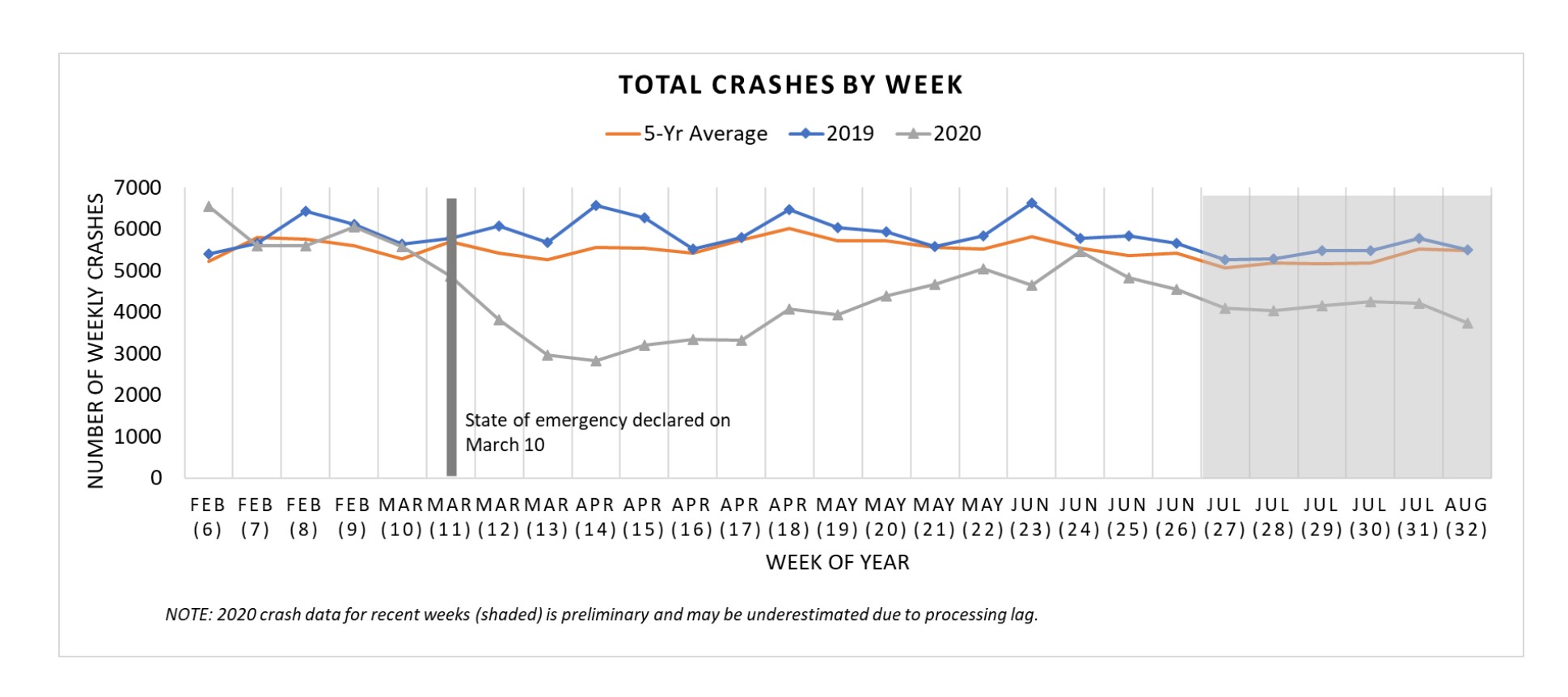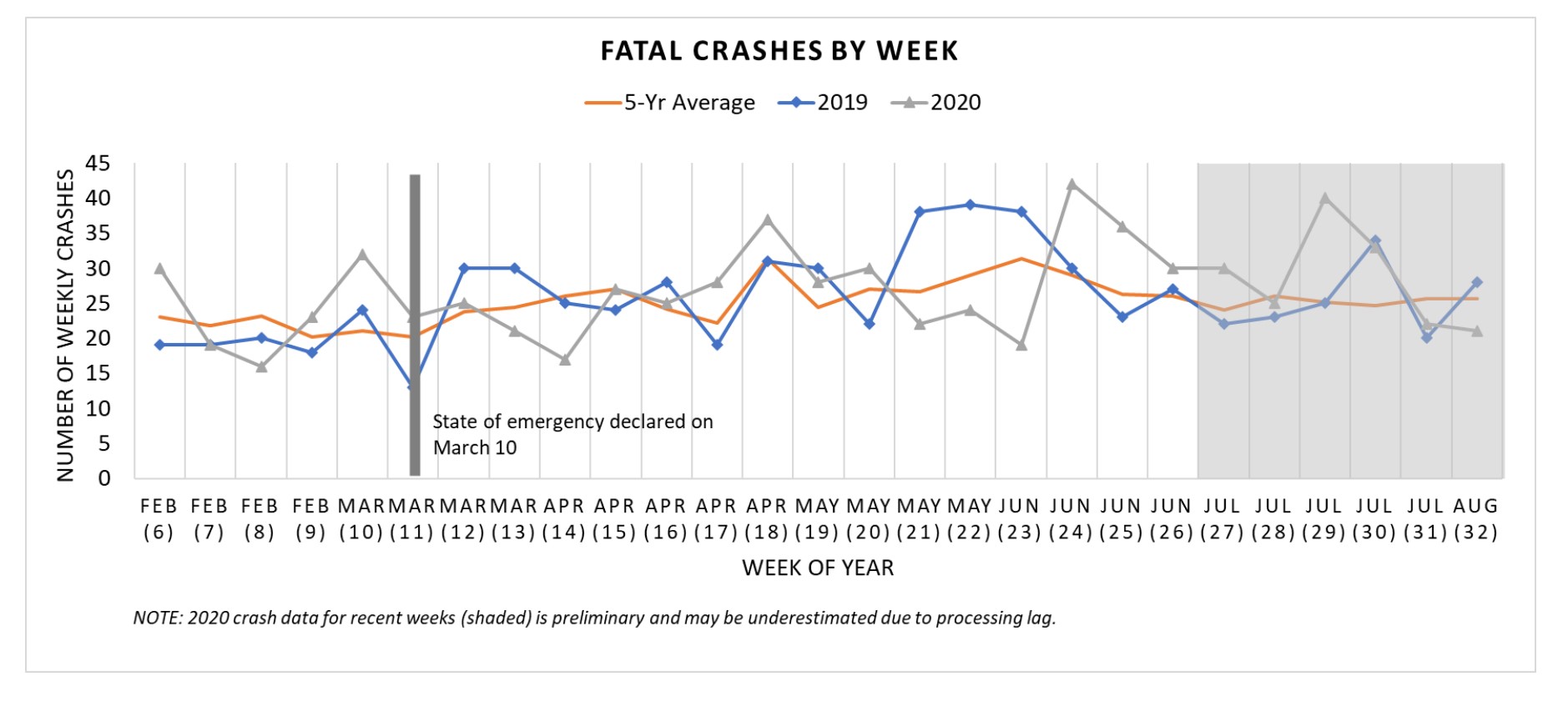NC DOT has published its analysis of data regarding vehicle crashes during the spread of COVID-19 throughout our state. The results may surprise you.
In the weeks following the Governor’s declaration of a state of emergency, roadways in the Triangle, where I live, were nearly empty. I imagine the situation was similar in other parts of the state. It is, therefore, not surprising that the number of traffic crashes in March and April dropped precipitously from the previous year and from the five-year average. In the first week of April, for example, there were about 3,000 crashes, down from nearly 7,000 the same week in 2019.
While the number of traffic crashes has continued to trend lower than normal throughout the spring and summer, it returned to the five-year average the second week of June. These numbers are not particularly surprising. One would have expected traffic crashes to decrease following the declaration of a state of emergency, to remain depressed during the ensuing statewide stay-at-home order, and to thereafter increase as restrictions were lifted.
What surprised me were the numbers of fatal crashes. Not only did they not precipitously decline, they actually surpassed 2019 numbers and the five-year average during several weeks this spring and summer. The sample size is much smaller, which leads to greater week-to-week fluctuation, but the trend line for fatal crashes did not exhibit the same downward trend as the overall crash rate.
What explains the divergence in these trends? I don’t know. Perhaps the circumstances that lead to fatal crashes are largely divorced from the number of cars on the roadway and are instead more closely tied to dangerous driving behaviors such as speeding and alcohol impairment. There is some support for that hypothesis in historical data. In 2018, for example, 22 percent of traffic fatalities were related to speeding, and 29 percent were related to alcohol. Moreover, to the extent that speeding leads to fatal accidents, fewer cars on the roadway might lead to increased speeds and increased risk. But, again, these are simply guesses.
There is some variation in the rate of decline between rural and urban areas. By the third week of May, the total number of rural crashes had returned to the five-year average. Crashes in Raleigh, Durham, and Charlotte, in contrast, remained significantly below previous year averages through July. For neither urban nor rural areas, however, was there a sustained decrease in fatal crashes.
As experts spend more time analyzing these numbers, I look forward to reviewing their findings for lessons that might make travel safer for all of us, both during and after the pandemic.


I am reminded of the meme that circulated on facebook: “You non-essential employees, us essential employees drive fast now.”
I’d be willing to bet the lack of enforcement contributed to higher speeds which in turn resulted in more fatalities. The “blinders” were on for a while and may still be for some agencies.